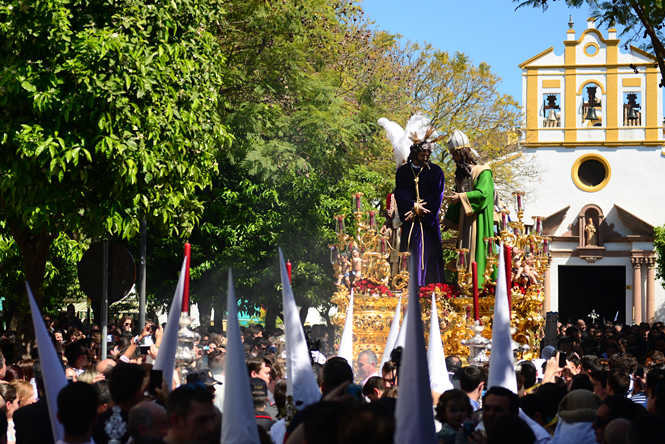
Vocabulary of Easter week
There are many unusual/little known words in the vocabulary of Easter week in Spain. Here we have tried to define those we consider as vital to understanding information on these celebrations.
Bulla
This is the name given to the crowds of people that concentrate on certain streets on the processional route.
Capirote
A cone made of cardboard or plastic mesh, covered in cloth known as “cubrerrostro” (face covering).
Capataz
The foreman is responsible for guiding the statue-bearers so that they move the statue correctly. He is helped by his assistants
Chicotá
The time and space that a processional statue requires from the time it is lifted to when it stops again.
Carrera oficial
The obligatory processional route for Easter brotherhoods. In Cordoba this includes Calle Claudio Marcelo Street and Plaza de las Tendillas Square. A strict processional timetable must be observed.
Costalero
These are the processional statue-bearers. They wear espadrilles, girdle and “costal”. This “costal” is a kind of cushion placed on the head with a folded cloth to avoid injuries.
Cofradía
A brotherhood dedicated to Easter week processions.
Cruz de Guía
The guide-cross at the head of the processional entourage. It is usually accompanied by two or four penitents with lanterns.
Crucificado
Statue of Christ nailed to the cross. By extension, this name is given to all statues limited to this representation of Jesus Christ.
Estación de Penitencia
The penitentiary station is the route followed by brotherhoods in Easter week.
Dolorosa
Statue of the Virgin Mary, afflicted by the death of her Son.
Hermano Mayor
The senior member, democratically elected to preside over the Brotherhood for a specific period of time. This position must be ratified by the bishopric.
Hermandad
Brotherhood of faithful who pay tribute to the statues.
Levantá
This is when the statue-bearers lift up the statue to begin a “chicotá”.
Hombre de trono
Throne man is a typical Malaga name given to the man who leads the throne. This expression is now being replaced by “portador” (carrier).
Nazareno
Member of a brotherhood who wears a tunic with “capirote”, taking part in the processions.
Madrugá
This is the night par excellence of the Easter week celebrations. The night of Maundy Thursday to Good Friday.
Parihuela
A wooden device on which the statues and artistic objects are placed
Palio
This is a canopy supported by twelve bars covering a statue of the Virgin Mary. It has tassels hanging from it.
Penitente
Penitent who can be distinguished by not wearing a “capirote” and by carrying a cross. This name is also given to those who accompany the procession in normal clothes, not members of the brotherhood.
Paso
Platform with legs onto which statues are fixed to use in a procession.
Saeta
Easter prayer song.
Torrijas
Made with wine and honey, they are typical Spanish sweets, usually made at home for the Easter week celebrations. The recipe is easy and they are nutritious, healthy, and high in energy.
Trono
The throne is a large table with bars on which the different statues, silverware, candles, etc. are set up and mounted to adorn the statue. This is then the setting for the processional statue of each specific brotherhood.
Trabajadera
Wooden beam on the “parihuela” for the statue-bearers to support the statue.
Varal
Name given to each of the twelve bars that support the canopy.





